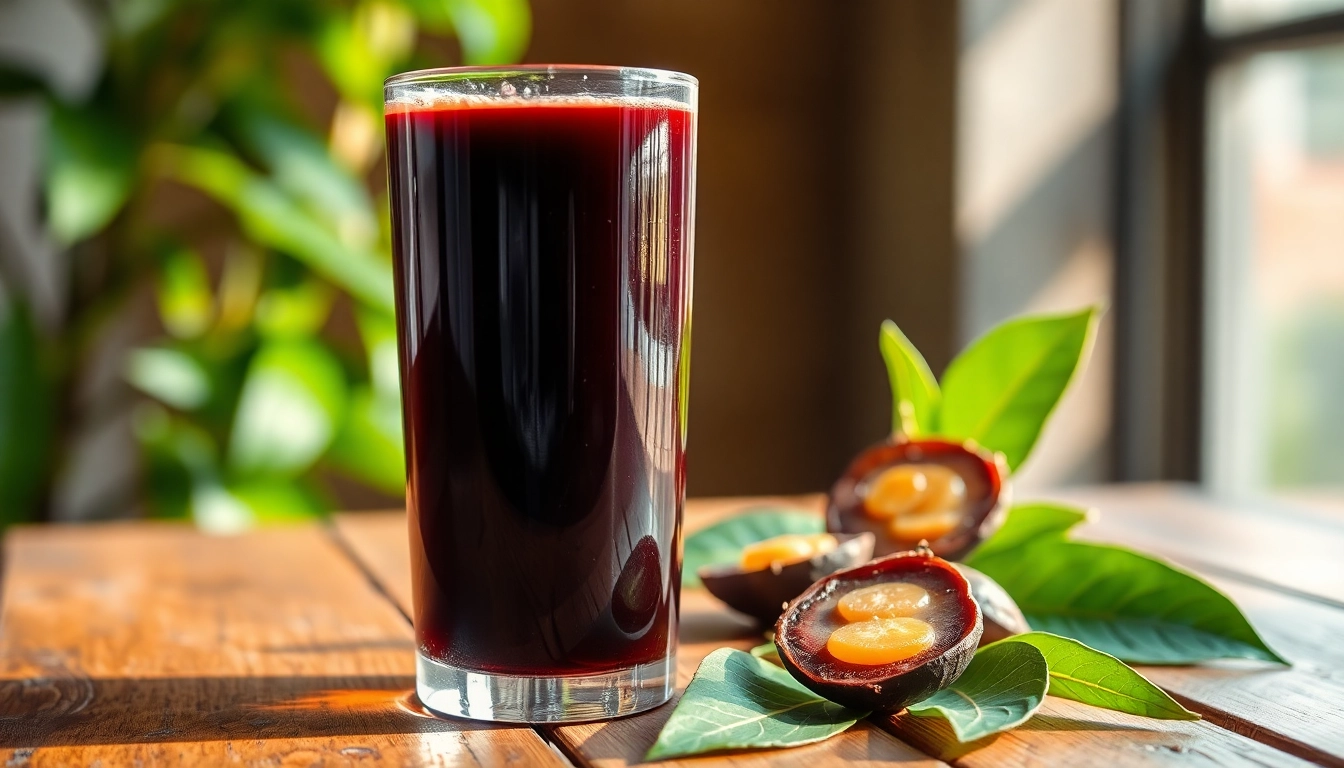Understanding Tamarind Juice: Composition and Benefits
Tamarind juice has gained popularity as a natural beverage renowned for its unique tangy flavor and health benefits. Derived from the pulp of the tamarind fruit, this beverage is celebrated across culinary traditions, especially in Indian, Southeast Asian, and Latin American cuisines. Its rich, dark brown color and distinct taste make it a versatile ingredient, both in traditional recipes and modern health drinks. As a company committed to offering authentic products, Spice Nest specializes in producing high-quality Tamarind Juice, ensuring consumers receive a pure, flavorful, and nutritious product.
Nutritional Profile of Tamarind Juice
Tamarind juice is packed with essential nutrients. It is a rich source of vitamins such as B-complex vitamins (B1, B2, B3, B6), vitamin C, and minerals including magnesium, potassium, iron, and calcium. The juice also contains antioxidants like polyphenols and flavonoids, which help combat oxidative stress. Its natural sugars provide necessary energy, while dietary fibers support digestive health. The low-calorie content makes it an excellent beverage for health-conscious consumers.
Health Advantages of Regular Tamarind Juice Consumption
Regular intake of tamarind juice offers multiple health benefits:
- Digestive Health: Tamarind contains natural acids and fibers that stimulate digestive enzymes, alleviating constipation and indigestion.
- Antioxidant Properties: The antioxidants help neutralize free radicals, reducing the risk of chronic diseases like heart disease and certain cancers.
- Blood Pressure Regulation: The potassium content aids in maintaining healthy blood pressure levels.
- Immune Strengthening: Vitamin C enhances immune response, helping fight infections.
- Weight Management: Its low-fat, low-calorie profile makes it suitable for those monitoring their weight.
Incorporating tamarind juice into your daily diet can contribute significantly to overall wellness. For those seeking a natural and delicious way to boost health, Spice Nest’s authentic Tamarind Juice is a reliable choice, ensuring purity and high nutritional standards.
Comparing Tamarind Juice to Other Fruit Beverages
When compared to conventional fruit juices like apple, orange, or grape, tamarind juice offers distinct advantages owing to its unique nutrient composition. Unlike sweeter fruit beverages that are often high in added sugars, authentic tamarind juice contains natural sugars with minimal processing, preserving its healthful properties. Additionally, its tangy flavor profile sets it apart, making it a versatile ingredient in culinary applications. The balanced blend of acids, vitamins, and minerals positions tamarind juice as not just a tasty drink but also a functional beverage that supports digestive and immune health.
How to Select Quality Tamarind Juice Products
Key Factors in Choosing Authentic Tamarind Juice
Selection of high-quality tamarind juice begins with understanding the factors that define authenticity. Opt for products that use natural tamarind pulp without artificial additives or preservatives. Check for a rich, deep brown color, which indicates proper processing and minimal artificial coloring. The flavor should be tangy, slightly sweet, and robust, reflecting genuine tamarind flavor. Packaging plays a vital role—airtight bottles or tetra packs that preserve freshness and prevent contamination are preferable.
Labels and Certifications to Look For
Trustworthy tamarind juice products come with labels indicating certifications such as FSSAI (Food Safety and Standards Authority of India), organic certifications if applicable, and quality assurance marks. Labels should clearly mention the ingredients, manufacturing date, expiry date, and storage instructions. Certifications serve as evidence of compliance with safety standards, purity, and quality, helping consumers make informed choices.
Trusted Brands and Certification Standards
Leading brands like Spice Nest adhere to stringent quality standards and certifications, ensuring their products meet international safety and purity benchmarks. Certifications related to organic farming, BPA-free packaging, and international export standards (such as ISO) add further credibility. Choosing recognized brands assures consumers of consistent quality, authentic flavor, and health benefits.
Creative Recipes and Uses for Tamarind Juice
Refreshing Summer Drinks with Tamarind Juice
Tamarind juice’s tartness makes it an ideal base for cooling summer beverages. Mix it with lime juice, a pinch of black salt, and mint leaves for a traditional Indian sharbat. Adding a splash of sparkling water creates a fizzy delight perfect for hot days. Sweeten lightly with honey or jaggery if desired, or blend with other fruit juices like watermelon or pineapple for a tropical twist. Such drinks not only quench thirst but also provide electrolytes for hydration.
Cooking and Culinary Applications
Tamarind juice serves as a versatile ingredient in cooking, especially in sauces, marinades, and chutneys. It enhances flavor in dishes like Indian sambar, ThaiPad Thai, or Mexican mole sauce. You can use it to prepare tangy salad dressings, dipping sauces, or glaze meats for a burst of authentic flavor. Cooking with tamarind juice adds depth, balancing sweet, sour, and savory elements that elevate any culinary creation.
Home-made Tamarind Juice Variations
Making tamarind juice at home is straightforward. Soak tamarind pulp in warm water, mash to extract the pulp, strain to remove seeds and fibers, and sweeten according to taste. For added health benefits, include ingredients like ginger, honey, or spices such as cumin. You can store the concentrated juice in sterilized bottles, diluting it with water for immediate consumption or using it as a base for mocktails and health tonics.
Market Trends and Industry Insights on Tamarind Products
Global Demand for Tamarind Juice
The international market for tamarind products, including tamarind juice, is experiencing significant growth. Factors driving this trend include increasing consumer awareness about natural and organic foods, rising health consciousness, and the expanding popularity of ethnic cuisines. Countries like the USA, European nations, and Middle Eastern markets are demanding high-quality tamarind extracts and juices, creating lucrative export opportunities for producers like Spice Nest.
Emerging Trends and Consumer Preferences
Modern consumers prefer products that are preservative-free, organically certified, and minimally processed. There’s also a rising demand for convenient, ready-to-drink options that preserve nutritional quality. Flavor innovations, including blends with spices or superfoods, further enhance appeal. Sustainability standards in packaging and sourcing are becoming crucial, influencing consumer purchasing decisions.
Export Opportunities and Industry Outlook
The tamarind juice industry’s outlook remains optimistic with steady growth aligned with global herbal and health food markets. India’s rich tamarind cultivation positions the country as a leading exporter. Strategic participation in international trade shows, like Biofach 2024 and other Food & Beverage expos, provides vital platforms for brand showcasing. Companies that invest in certifications, innovative packaging, and quality assurance are well-positioned to capitalize on rising global demand.
Tips for Incorporating Tamarind Juice into a Healthy Lifestyle
Daily Intake Recommendations
Moderation is key when incorporating tamarind juice into your diet. A typical serving of 100-150 ml daily can deliver nutritional benefits without overconsumption of natural acids or sugars. Consulting with a healthcare professional can help tailor intake based on individual health conditions such as acidity or allergies.
Pairing Tamarind Juice with Nutritious Foods
To maximize health benefits, pair tamarind juice with nutrient-dense foods like fresh fruits, salads, and whole grains. It complements spicy dishes and adds flavor without extra calories. Incorporate it into smoothies, yogurt bowls, or as a marinade base for lean meats and vegetables.
Addressing Potential Allergies and Precautions
While tamarind is generally safe, some individuals may experience allergic reactions, including mouth itching or gastrointestinal discomfort. Those prone to acidity or ulcers should limit intake. Always choose certified, preservative-free brands like Spice Nest to ensure safety, and consult healthcare providers if uncertain about allergies or interactions with medications.


